These are the most common and flexible escape room puzzle ideas that we’ve seen in our experience doing 400+ escape rooms across the United States and Europe. These ideas are not specific to any particular theme or company, and can be adapted to work well in most rooms.
On one end of the spectrum, these puzzle ideas can be perfect for an escape room on a tight budget. On the other end of the spectrum, some of the best escape rooms in North America use these ideas with stellar execution.
This list is broken up into two sections:
- Section 1: Extracting Digits, Letters, Directions, and Orders
- Section 2: Extracting Phrases
- Section 3: Extracting Pictures and Instructions
- Section 4: Extracting Items
- Section 5: Alternate locking mechanisms
- Section 6: Simple Circuits
Section 1: Extracting Digits, Letters, Directions, and Orders
This section contains very common puzzle themes that are repeated in many escape rooms. Many of these themes can be easy to implement and are not high-tech, but can lead to fantastic results in high-quality rooms.
Idea #1. Extract Numbers from Pictures

This one is incredibly flexible since it serves both as decor and a way to hide numbers that are used in some sort of combination lock. This one is also easier to implement since you just need some sort of design or image, and then to secure it to the wall firmly so that overzealous room escapers won’t be able to pry it off.
Tips: An extremely common method is just counting, like the example in the image caption above. You can have an image of 9 pineapples – and somewhere else in the room you have a hint that a pineapple is supposed to correspond to a number. The number of pineapples, in addition to the numbers of 3 other fruits, can give you the code for a 4-digit combination lock.
Idea #2. Cast a Shadow
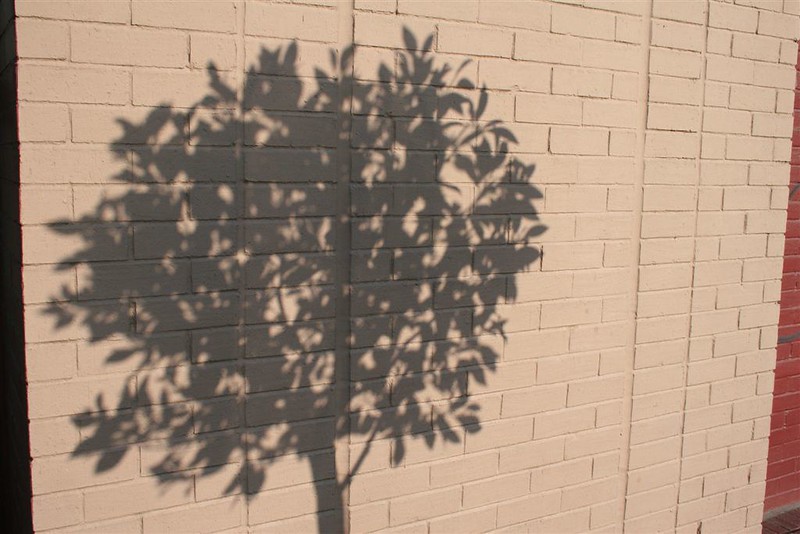
You can be creative with items and design / place them in such a way so that they leave a series of numbers or letters when a spotlight is shone on them in the right way. The spotlight can turn on once a user does the appropriate action, maybe press a button that is only accessible after the player discovers it or unlocks the box that contains it. Additionally, you can use shadows to point the user towards particular symbols or items of interest on a wall or a floor.
Tips: This is an excellent place to try to turn some of the decor of the room into a puzzle!
Idea #3. Build a Number Using a 7-Segment Display
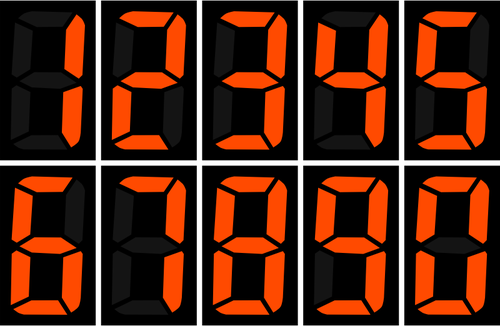
These 7 segment screens might be less common nowadays, but they make a simple way to have your players build-their-own numbers by following a set of instructions on some sort of 2×3 board.
Tips: You may be able to go further and have players construct letters or even full words as well. Just make sure that your instructions are precise, while not needing too much reading.
Idea #4. Press the Buttons or Place Items in the Right Order
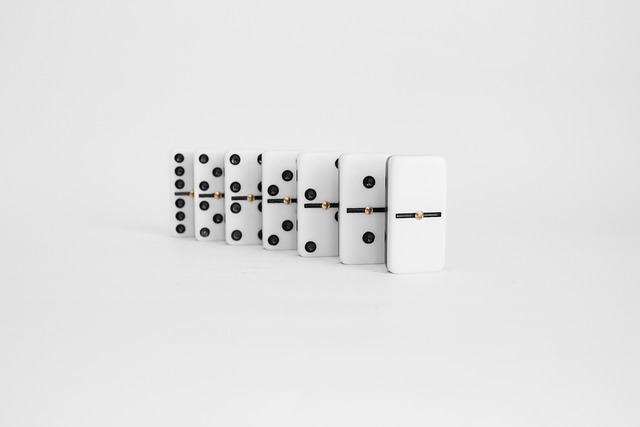
This is a common puzzle. There are a sequence of buttons (or pull strings or equivalent), and players need to press the buttons in the correct order. The buttons are labelled or shaped with some sort of object, and some sort of clue elsewhere in the room will tell players which order they should press the buttons.
An alternate way to implement this puzzle is to have players press the right set of buttons at the same time. This may help involve multiple team members, as the buttons might be physically separately from each other (or, there are simply too many buttons for 1 person to press simultaneously.
Tips: In psychology, a commonly cited research paper states that the average human can hold in working memory up to 7 +/- 2 items. If you have a sequence of buttons that your players need to press, we recommend anywhere between 6-8 items. 5 or fewer is problematic as it becomes easy for players to bash the order of the remaining once they have just one of the items. 9 or more is problematic as it becomes difficult for players to remember the sequence. If you ask for players to memorize the order of 8 items, we recommend giving players a boogie board that they can use as live memory.
Section 2: Extracting Phrases
Idea #5. Decrypt Messages

These red symbols sure look enticing. If only we could decipher this… (This is the Codex Runicus)
Custom codes and ciphers are the most common in escape rooms since they’re a great way to incorporate the theme. Other than custom symbols, Morse code seems to be the second most popular because of its flexibility (works in audio and flashing light forms too) and general recognizability. Other popular codes and ciphers include Pigpen Cipher, Caesar Cipher, or a Book Cipher (commonly the Arnold Cipher).
Tips: This code sheet (from Puzzled Pint) lists the most common codes / ciphers used in puzzle hunts, which is also some of the most common codes / ciphers used in escape rooms. Make sure you provide some sort of reference sheet for your players if you plan on using a cipher / code – this is not necessarily common knowledge.
Idea #6. Find Information in Plain Text
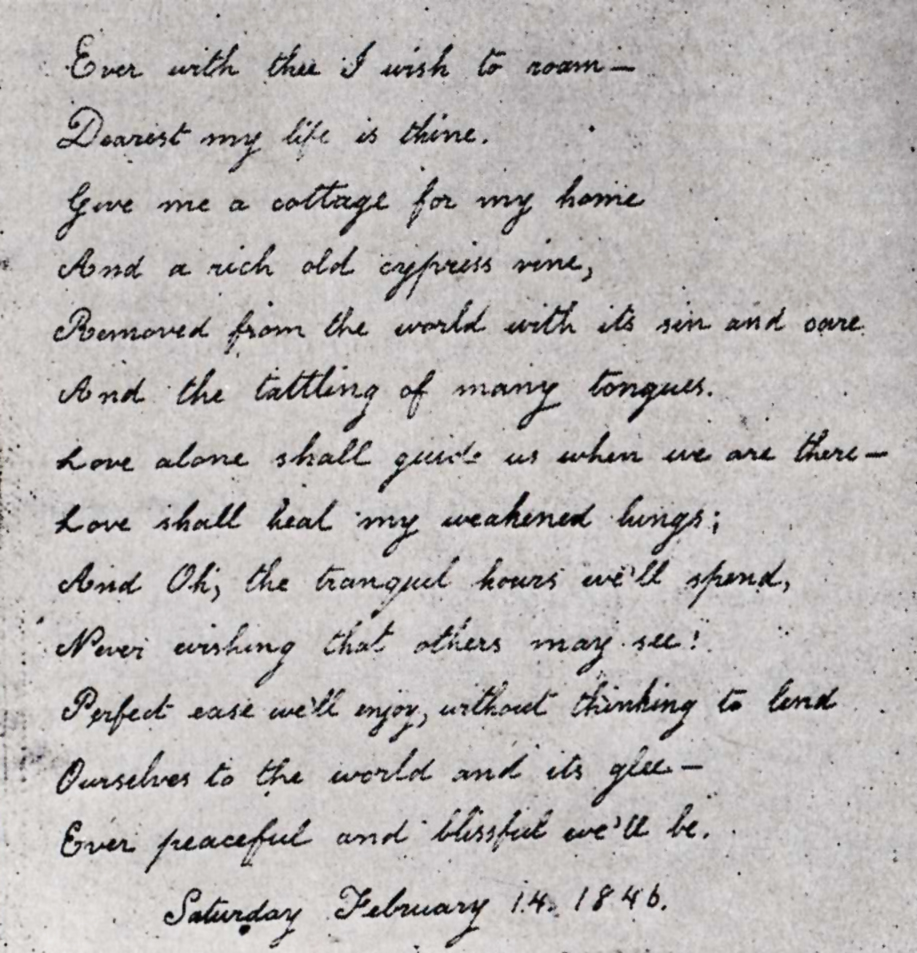
You can hide information in passages of text that otherwise help fit the story or theme of the game. This one is incredibly flexible. There are a huge number of ways you can do this, including:
- Highlighting or coloring certain words or letters in a text passage
- Giving your players access to some sort of sheet with holes. These holes lined up with the text in the right way will show specific words that players should read.
- Particular words in the text will refer to particular objects around the room, which will give players a particular selection or ordering.
- Hide a message thats revealed if players read the words in a particular way, for example every 5th word, or reading down a particular line.
- Certain words in the passage could glow if held up to a light, when the lights are turned off, or over a blacklight.
- Have players look up information in a particular file
Idea #7. Reveal Invisible Messages by Blacklight

This is one of the more common mechanisms that we see in early escape rooms. A blacklight is hidden somewhere in a locked box or cabinet somewhere in the escape room, which lets players comb the walls and objects around the room for hidden puzzles written in blacklight marker.
Tips: Make sure that the things you want to show in the blacklight are visible when the blacklight is shone on it. If it isn’t visible, either you’ll need a stronger blacklight, a new coat of blacklight paint, or you need to move the clue to somewhere with much worse lighting. Please also keep the batteries fresh!
Advanced Tips: You can also have a whole wall full of blacklight paint, and then have some sort of player action trigger a whole room to light up in blacklight with a blacklight fixture.
Section 3: Extracting Pictures and Instructions
Idea #8. Piece Together Parts
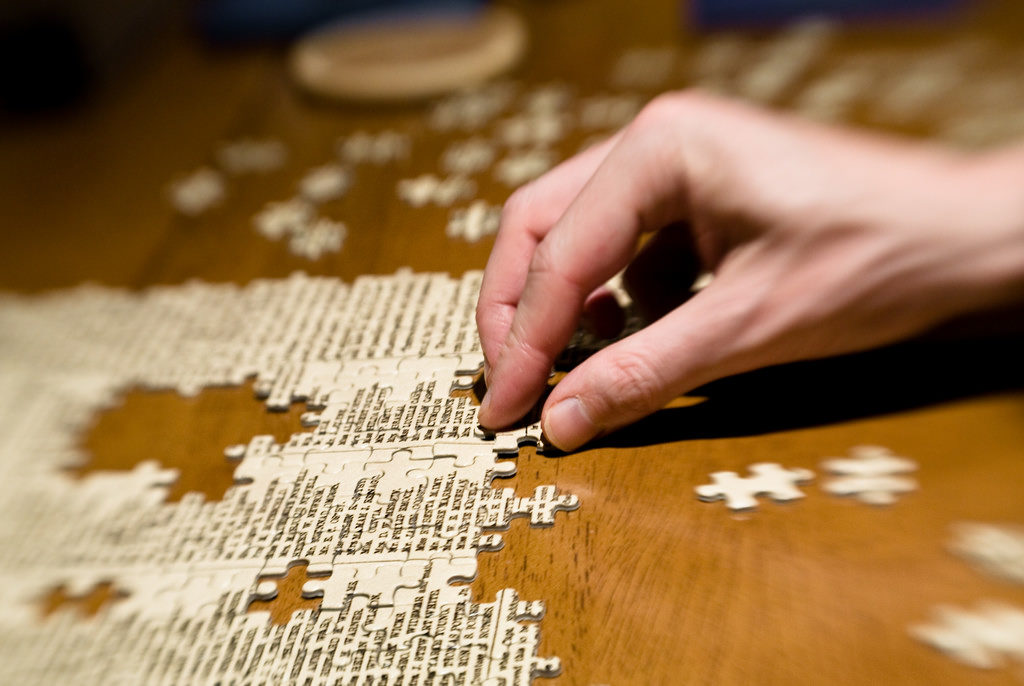
This common puzzle involves players slowly finding various pieces of a large clue they need to solve the game. This is incredibly common as it allows players to achieve satisfactory progress, let them try to solve the incomplete puzzle, and then realize that they need more pieces in order to proceed. This comes in a variety of flavors:
- You get the pieces of a multi-piece puzzle sequentially, not all at once.
- A critical piece of paper you need comes in parts, and you need to find all or most of them in order to understand its contents
- A jigsaw puzzle or tangram puzzle or something similar
Tips: Make sure that your pieces are durable and can withstand rough use from hundreds of escape room players. A dirty sheet of paper is not fun to play with.
Section 4: Extracting Items
Idea #9. Search for Items in Odd Places
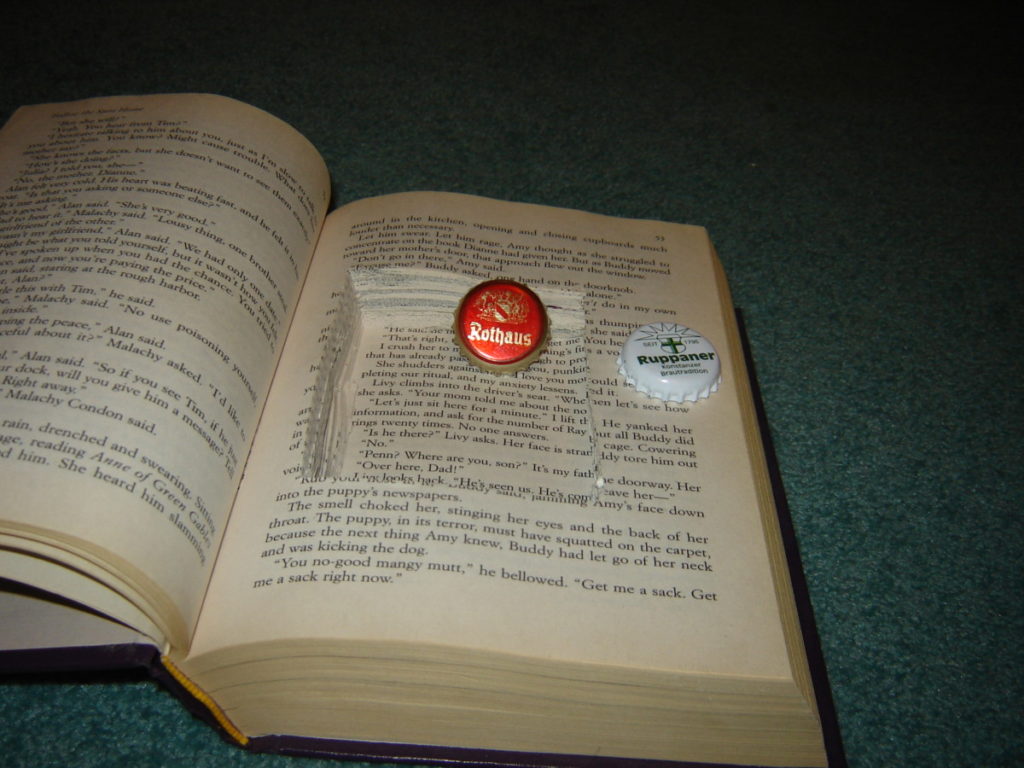
This is almost certainly the most common escape room puzzle – it’s so common that every one of the escape rooms we’ve had have had searching as a component in some way or another. This simply involves hiding important things in not-so-obvious places.
Tips: Common places include within coat pockets, inside a book safe, inside drawers, inside containers, on top of a ledge, on top of surfaces that are just beyond eyes reach, or stuck to a support pillar of the room. More evil places include behind parts of the wall, underneath the floorboards, or wedged behind things.
Word of caution: Escape rooms that have more searching will also have more players trying to take apart the room. We’d warn against hiding things in the ceilings, above arms reach, or inside electrical outlets as that can cause issues.
Idea #10. Retrieve Items Out of Reach
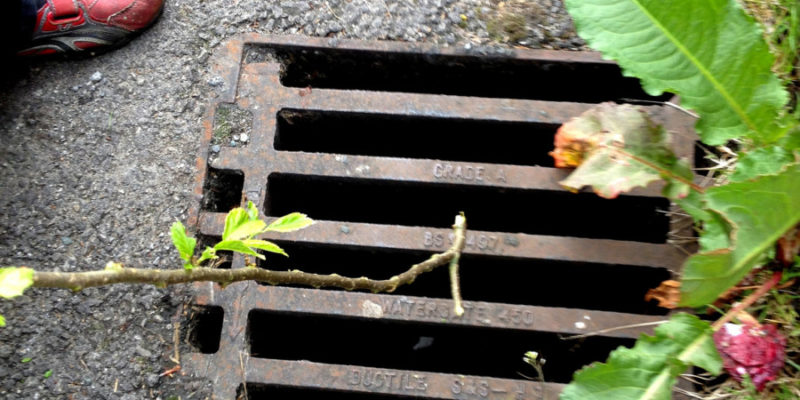
This is especially common in prison-themed escape rooms. The keys to a cell are usually just out of reach beyond the bars, and the players must use a long stick, a magnet on a string, or grabby tool.
Tips: Keys are not magnetic, but steel rings are. A magnet attached to a string can grab keys on a steel ring. This concept also applies in general to any object that’s out of reach via normal means, and the player must find some sort of method to extract the object out. Usually the object is a key.
More Tips: You can also do this with lines of sight. Potentially something written somewhere is not visible unless the player holds up a mirror.
Idea #11. Solve Puzzles in Everyday Objects
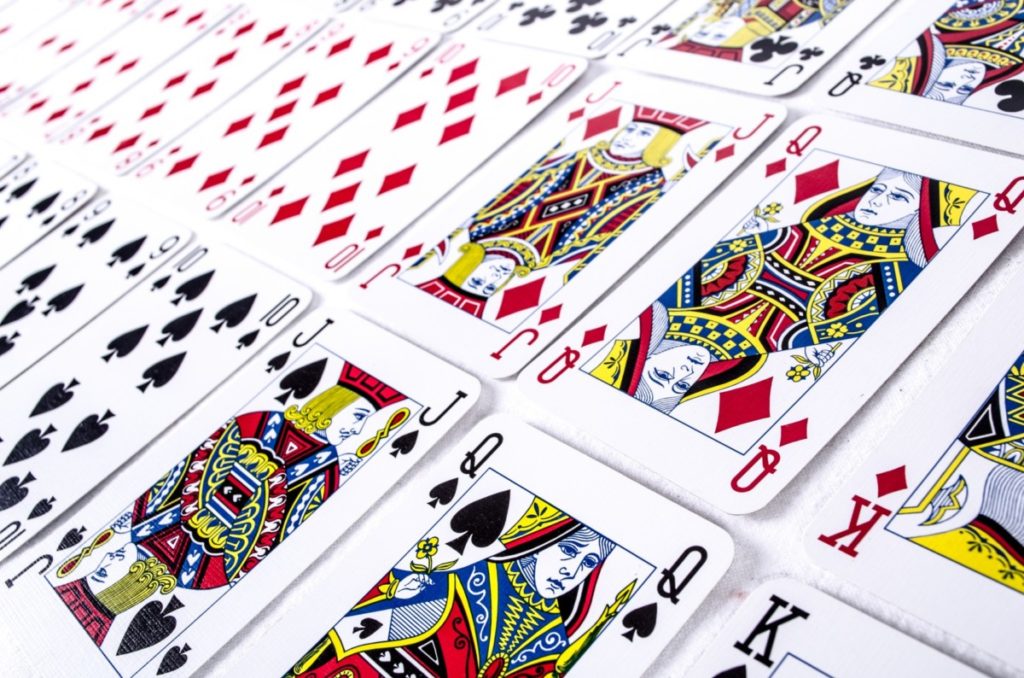
This idea is a catch-all for all of the different kinds of objects that you can turn into a puzzle. Playing cards are extremely common and probably somewhat overused here. Here are some more ideas:
- For objects that clearly belong together, you can write on them so that it spells out some sort of code or message (when reassembled into the right order).
- For objects that are very numerous, you can write various symbols on them and have some sort of mechanism to get your players to choose the right ones (in order). You can also have your players count them to get the combination for a lock.
- For objects that already have numbers on them, you can have some sort of mechanism to have your players choose the right ones in order in order to get the combo to a lock.
- An object has to be placed in exactly the right place in order to trigger a magnetic lock (see the “Magnetic Reed Switch” idea)
Tips: Another way to expand on this is to have your players put these items in order to form some sort of code. The ordering can be by size, length, in the order that they were mentioned in a passage of text, or so on.
Idea #12. Take Out an Object from a Maze
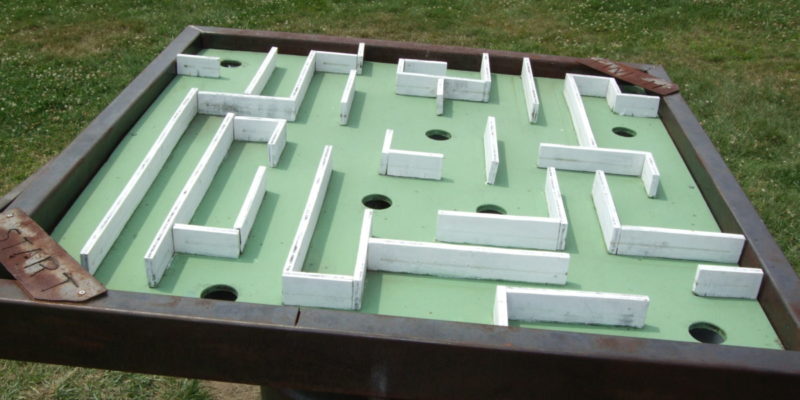
The key (or other important object) is hidden in plain sight, but the player has to solve some sort of maze in order to access the object. The player has to maneuver the key or other object outside of the maze using a set of restricted movements.
Tips: There’s tremendous variety here. The maze can be horizontal and rely on tilting motions, vertical and mounted on a wall, or even 3-dimensional and requiring the coordinated actions of two players.
Section 5: Common Locking Mechanisms
While the key lock is ubiquitous, it can easily be overused. Here are some of our suggestions to go beyond the normal key lock and look into other mechanisms. Some of these mechanisms can only be executed with some basic electronics knowledge.
Idea #13. Open a Combination Lock

Combination that are common in escape rooms include 4-digit combination locks, 5-letter word locks, and directional locks. These locks are fairly common in escape rooms and do well to establish more variety in the locks in an escape room (and help prevent the scenario where players aren’t sure which lock their code should go in).
Tips: For 5-letter word locks, some players will attempt to guess the right word according to the theme of the room (like MAGIC for an magic-themed rooms). To avoid that, it’s better to go with a world that’s much less obvious. Similarly, for 4-digit combination locks, players will likely try to guess the last digit after they have 3 out of the 4 digits.
Idea #14. Go with some Fancier Combination Locks

There are some fancier combination locks that feel higher quality and more weighted may make sense for your themes – for example you can check out the Justin Nevins cryptex lines, crafted within the USA.
Section 6: Simple Circuits
Idea #15. Place an Item to Trigger a Sensor
An object placed in the correct location can trigger the opening of a door or cabinet. This is more advanced than the other ideas on this list but also can be a simple electronics project.
Tips: The object will usually have a magnet or an RFID tag buried on the bottom. The surface that the object is placed on will have a Reed Switch or some sort of RFID reader. There’s enormous flexibility here to hide the technology inside props that are appropriate for your theme. Make sure that once the door or cabinet is open, it is very clear to the players that something inside the room has changed.
Getting Started: For beginners to electronics, we recommend getting an Official Arduino Starter Kit. After getting familiar with the platform, you can get a pack of reed switches to test out some basic ideas. Arduinos are small computers / micro-controllers that can route switches to the correct action (e.g. if 3 items are placed in the right place then a maglock will open a hidden door).
Non-Recommended Puzzle Ideas
While these are still valid puzzle ideas for escape rooms, we personally don’t recommend them (although they can be fun for certain players).
Not recommended due trivialness
- Trivia – Escape rooms are best when they don’t depend on pre-existing knowledge, else your customers can easily get stuck. This includes answers to crossword puzzles that rely on trivia rather than guessing of a proper word.
- Riddles – These mostly rely on people having heard the riddle before, and are usually difficult to fit into the theme of the game.
- Arithmetic – A math problem shouldn’t be used as a puzzle by itself.
Not recommended due to frustration
- Puzzles without one definite solution – Following the puzzle solving process properly should lead players to one definite solution, not two, three, or multiple.
- Technology that is likely to be finicky – If a player does exactly the right sequence of steps, they should be able to solve the puzzle.
Not recommended due to safety
- Hiding things in fake electrical outlets – This is a safety issue.
- Hiding things in ceilings – This is also a safety issue
Conclusion
Our general (and very common) advice for entrepreneurs interested in starting an escape room business are to travel and try out as many great escape rooms as possible before you begin, to get a sense of what makes a good experience for your customers.
These ideas that we listed can be incredibly easy and inexpensive to implement, but please don’t make them seem like they were easy or inexpensive to implement. These ideas are very common, which means that the most basic versions of these puzzles are somewhat overdone. However, with good execution and application of your theme, you can still delight your customers with variants of these puzzles.
Disclosure: This post contains Amazon affiliate links, which means that we may get a small commission for any purchases made through the links. Image Attribution: The cover picture of this blog post is made by leoflynn on deviantart.
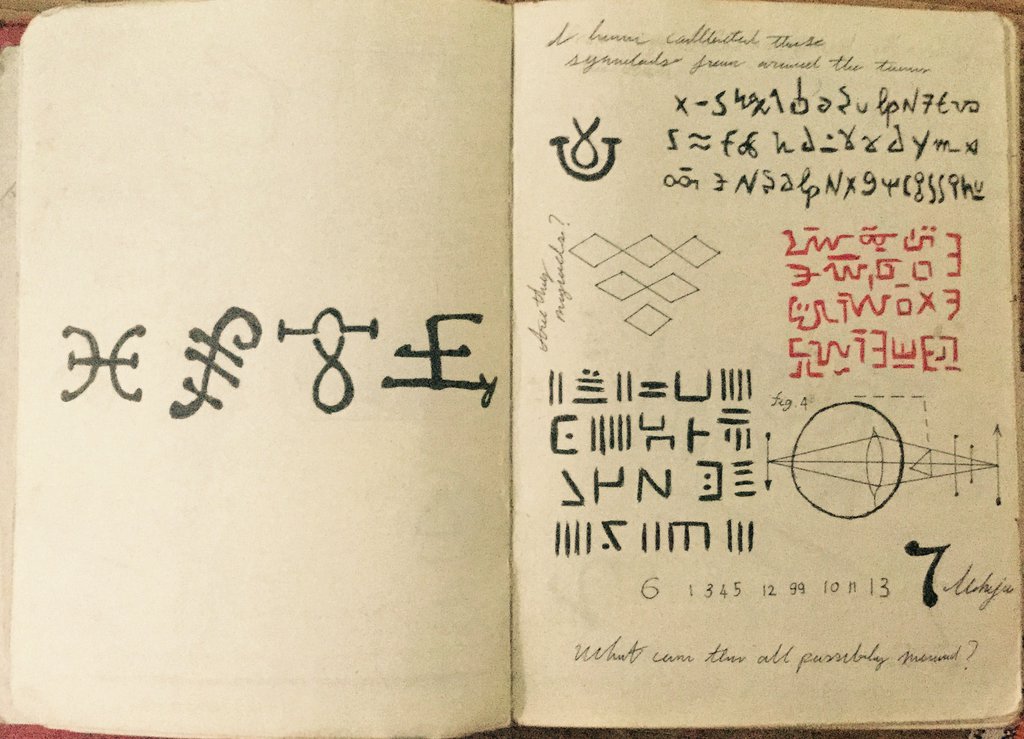
February 3, 2017 at 8:19 pm
Most keys are made from brass (a non-ferrous metal) therefore a magnet will not work unless you attach a steel (ferrous metal) ring to the key.
February 4, 2017 at 12:20 am
Ah, thanks for the clarification. That’s an important note so I fixed up that part.
February 23, 2017 at 6:20 pm
Hi William,
I am co-organizing a camp for Girl Guides of Canada. We are hoping to have about 350 participants, ranging in age from 6 years to 17 years. The camp is at Doe Lake Girl Guide Camp, Sprucedale Ontario. Our camp theme is The Mystery of Aloha. We want to have camp wide game, that the participants will engage in through-out the day. The girls will be seeking clues to solve the Mystery ( who stole the Tiki Man). I want to set up escape room style puzzle through-out the camp. Our budget is pretty much nil. Can you provide me with any ideas, suggests or ……….. I think I have bit off more than I anticipated
February 24, 2017 at 12:05 am
Hi Charlene! With 350 participants and a nil budget, a puzzle hunt or scavenger hunt type activity would be a lot more doable than an escape room style puzzle. A camp-wide scavenger hunt that ties into your theme is a scalable way to occupy 350+ participants for maybe a few hours. If you have enough volunteers, you can have your participants go to various stations and do certain actions.
You can also have “puzzle stations” that involve paper “Mystery of Aloha”-themed puzzles, or any of the ideas on this list (there are low-cost versions of many of these). For puzzle hunt puzzle ideas, you can take inspiration from the Puzzled Pint archives – http://www.puzzledpint.com/puzzles/. They have puzzles of various difficulty levels.
July 6, 2017 at 9:28 pm
We are hoping to try some escape room kind of activities for our youth group. Thank you so much for the great article!
August 11, 2017 at 6:43 pm
Any ideas for a 8th grade classroom for first day back to school?
August 11, 2017 at 6:51 pm
Hi! If you’re looking for general paper puzzle ideas, the puzzled pint archive is always a great place to start: http://www.puzzledpint.com/puzzles/.
May 6, 2018 at 6:47 pm
Wow thank you so very much.
September 12, 2018 at 1:44 pm
Even though this is an old post…great ideas still!! General question …what are your thoughts about collecting cell phones prior to entering the escape room? Good idea or not? I’m working on developing one for work and I can see people using them to try to get answers. Thanks.
September 12, 2018 at 5:10 pm
From the perspective of the player, it’s basically universally disliked, so I would try to avoid doing that if possible.
April 30, 2019 at 10:05 am
How do we make a maze that can tilt?
April 30, 2019 at 10:24 am
I wish I could help, but I don’t have the expertise to help answer that. You might have better luck redirecting your question to one of the escape room owner groups on facebook, like https://www.facebook.com/groups/EscapeRoomOwners/?ref=share
May 8, 2019 at 10:22 pm
So many great ideas! I’m holding a camp for our players to have a night walk whilst including missions in the form of escape rooms. Any suggestions?
May 11, 2019 at 11:48 am
Hey! There’s lots of things you could do here, but you could have puzzles that resolve into combinations, which let people into a locked box that includes a stamp that they can use to stamp something.
July 30, 2019 at 10:55 am
Some interesting ideas here that could easily be made into lessons to add engagement.
August 1, 2019 at 6:56 pm
Do people always have to do things for the sole purpose of making money? Are their people who make escape rooms for the enjoyment of their friends? If so, why do you adress readers as entrepreneurs?
August 1, 2019 at 7:00 pm
This post was initially targeted for people building out an escape room, but that might be a bit more of an outdated audience now. Thanks for the feedback, I might update it at some point to target a broader audience.
November 18, 2019 at 5:26 pm
Can you recommend certain puzzle types for 8th graders in a health classroom?
February 17, 2020 at 4:28 pm
Or you could buy a ‘Laberyth’ ( I know I spelled it incorrectly) form Target(or another local store).
April 9, 2022 at 10:58 pm
I completed my first Escape Room on a cruise ship this past weekend. One of the challenges was two window displays that were almost identical with the differences being the key. I used by cell phone to take a photo of one window to compare to the other. Unfortunately, the quality was so bad it was not useful so we solved it with lots of yelling. Although I could see the use of phones being discourage, should players expect to have pencil and paper either provided or instructed to bring with them or should they expect pencil and paper to not to be used?
April 9, 2022 at 11:32 pm
In your case, I would expect paper and pencil to be provided. I don’t think players should ever be expected to provide their own paper and pencil.
August 4, 2022 at 10:43 am
This is so very helpful, thank you! I’m a youth services librarian who has run multiple escape rooms for my teens, but I’m always looking for new ideas and puzzles for them. This overview really helped with some new ideas!
February 4, 2023 at 3:30 pm
Thanks for the help. I’m creating two escape rooms as a fundraiser at my college, and these tips are super helpful!
January 2, 2024 at 4:02 pm
…looks more like 3 orange and 5 red gummy bears
January 7, 2024 at 6:35 pm
Thanks, I think you’re right and one of them was a bit unclear… I simplified the comment of the image.